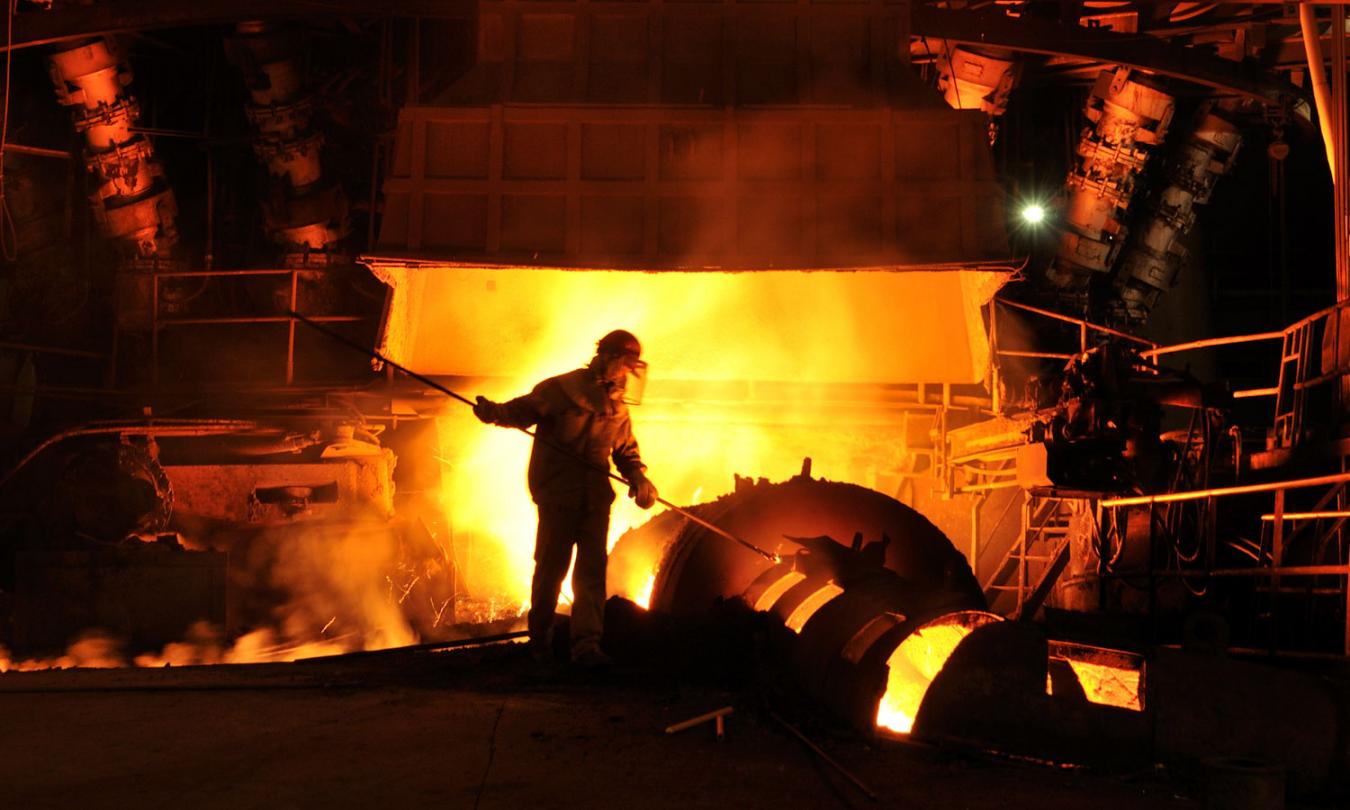Iranian steel mills produced more than 11.4 million tons of crude steel during the eight months of 2016, which indicate a 5.1% rise compared with last year’s corresponding period, according to a preliminary report exclusively sent by World Steel Association to its members, including Iranian Mines and Mining Industries Development and Renovation Organization, and seen by the Financial Tribune.
The report indicates Iran’s August output remained the same as in July to stand at 1.35 million tons, which marks an 8.1% growth compared witho the same month of the previous year.
The world’s 66 steelmaking countries were not able to snap their months-long declining production trend due to a persistent global glut and China’s endeavors to cut down on its gargantuan production capacity. Steel mills around the world produced over 1.06 billion tons of the industrial material over the eight-month period to register a 0.9% fall year-on-year.
Iran maintained its position as the world’s 14th largest steelmaking country as its January-August performance placed it between Mexico (13th) with 12.3 million tons and France (15th) with 9.3 million tons of crude steel output.
Iran’s crude steel output stood at 16.1 million tons in 2015. The country aims to become the world’s sixth largest steel producer as per the projections of the 20-Year Vision Plan (2005-25), which envision the production of 55 million tons of crude steel per year by the deadline.
Iranian steel mills have so far realized close to half of the crude steel production capacity target, according to Iranian Mines and Mining Industries Development and Renovation Organization.
China remained the world’s biggest steel producer with a 536.3 million ton output in the eight-month period. It was followed by Japan with a 69-million-ton output, India with 63 million, the United States with 53.4 million, Russia with 47 million, South Korea with 45.3 million, Germany with 28.7 million, Turkey with 22 million, Brazil with 30.3 million, Ukraine with 16.3 million, Italy with 15.3 million and Taiwan with 14.5 million.
China, India Go Against the Flow
For the first time in many months, China’s year-on-year performance recorded a decline of 0.1%. However, crude steel production by the top supplier rose to 68.57 million tons in August, up 3% year-on-year and 2.6% higher than July.
“We expect that production will remain high because better profitability is encouraging mills to boost output,” Kevin Bai, a researcher at the consultancy Commodities Research Unit Group’s Beijing office, told Bloomberg. “But one of the factors to watch is going to be stricter government policy to cut output and obsolete capacity. Less than half of their target has been met.”
A pick-up in Chinese steel prices this year has helped ease crisis conditions in the global industry, although exports from the Asian nation remain elevated, spurring trade tensions. China has said it will tackle its own overcapacity by cutting as much as 150 million tons, or about 13% of its total, by 2020. That campaign is already falling short, with only 47% of capacity shut this year by end-July, from a target of 45 million tons.
At a time when a surplus is forcing steel mills to close around the world, India’s debt-laden producers are strongly defying the global trend and gearing to supply more of the metal than ever. Indian mills produced 63.03 million tons of crude steel during January-August and posted a 5.3% rise compared to last year. The country’s August output also increased 8.6% compared with the similar period of 2015 and stood at 8.08 million tons.
According to Bloomberg, India is targeting record output in 2016 and wants to almost triple capacity over the next decade. They expect demand in the world’s third-largest steel producing country to grow four times the current rate, as Prime Minister Narendra Modi embarks on huge investments in railroads, highways and ports, including $44 billion pledged for this year.
“It is an ambitious move and a strategic decision by steel companies to up their production,” Gunjan Aggarwal, an analyst at CRU Group, a commodity researcher, said by telephone from Mumbai. “They are trying to recover the ground they had lost in the last two years or so to imports.”
Like big steel markets in the US and Europe, India was inundated with cheap supplies from China, the biggest producer and exporter. While Indian demand has doubled in the past decade as the economy expanded, the country still produces more than it consumes. Record imports sent steel prices in January to a six-year low. The slump led to losses for JSW Steel Ltd., Steel Authority of India Ltd., and Tata Steel Ltd., the largest producers, during the fiscal year that ended on March 31.


